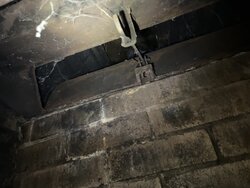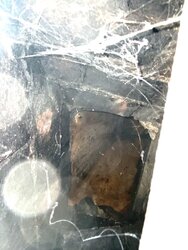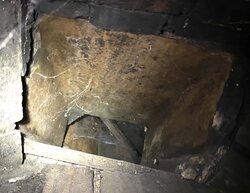A chimney sweep / repair man told me he could knock off a few tiles and fit a 6" but not insulated. Damper plate is 5" so I'm guessing he's planning on cutting that out. Could somebody double check his opinion? Fireplace was a gas fireplace in the corner of the house, built in the 70s by an awful builder.
Background: He stuck his head up and looked at it for about 10 seconds. Didn't mention cutting out the damper plate that is 5" width. I have been having a hard time finding credible people.
Any way to get a 6" insulated liner up there for ~$3000 or less?



Background: He stuck his head up and looked at it for about 10 seconds. Didn't mention cutting out the damper plate that is 5" width. I have been having a hard time finding credible people.
Any way to get a 6" insulated liner up there for ~$3000 or less?






